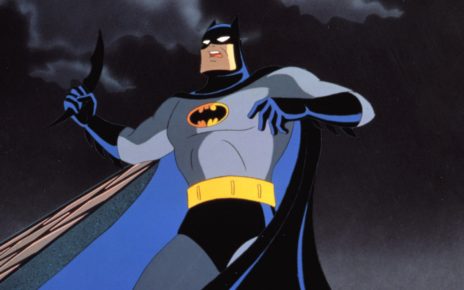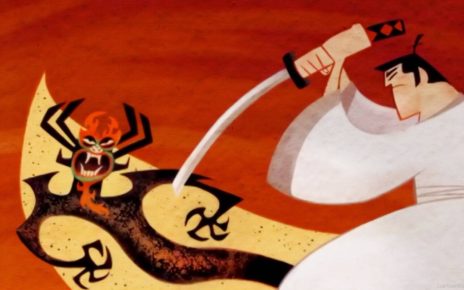If you are to know two things about me, know these: (1) I am a Libra-Scorpio cusp, possessed of the sociable, peacekeeping, and indecisive nature of the former and the brooding emotional core of the latter. (2) I believe Batman: The Animated Series is a work of sweeping genius and ranks among the finest adaptations of all time, in any genre. It’s not like my Bat-love hasn’t been well-documented in this publication, as it’s a sentiment I share with my co-editor Eric. I even interviewed one of its creators, Bruce Timm, in advance of the release of Timm’s latest animation, an adaptation of Alan Moore and Brian Bolland’s Batman: The Killing Joke.
These two things are two very, very good reasons for me to have not left the movie theater after watching The Killing Joke throwing my hands in the air and immediately grumbling about the damn thing. But there’s no other way to say it: producer Bruce Timm and writer Brian Azzarello’s adaptation is a runaway trainwreck. The animated Killing Joke—no matter its inspiration’s pervasive industry reputation—could have been kept from going off the rails, but since the way to do that wasn’t immediately obvious to its creators, it probably never should have been made.
This isn’t reeeally a review so much as a kvetching, so I won’t completely dive “into the abyss” (one of many bits of uncomfortably clichéd dialogue the film gives to both Batman and Batgirl). The real joke here is that this movie, already being labeled a “disaster,” is only irredeemably undone by the groan-worthy editorial decision that led to Batgirl and Batman having sex on a roof. (Cue the battering destruction of a thousand keyboards.) Even if you could possibly ignore that, its representational character failures still leave it a bit of a mess—but then, ditto the graphic novel, which Moore later decried. And we all know how Moore’s philosophy-laden prose typically translates to screen.
All of which is sad. In a period in superhero cinema that gave Azzarello ample opportunities to learn from his peers’ mistakes and not fail the Bechdel Test, he went ahead and butchered his Strong Female Character, leaving her a petulant teen sexpot desperate to screw her mentor. (And if he has any strongly-worded, equally-sexist reprimands for me upon reading this article and would like the world to see them, he should feel amply empowered to forward an op-ed and/or rant to thedotandline AT gmail DOT com.) Their rooftop sex scene could have been cut completely, replaced with a scene that saw Batgirl stumble through a fight with a bunch of bad guys, only to get her ass saved with a kick and a wink by Black Canary, and voila! Feminine role model, reason to stop sidekicking for Batman upon discovering his inner darkness without having to dive into the Boom Boom Pow sexytime “abyss,” and a subtle nod to Gordon’s eventual role as Oracle in Birds of Prey—which is even teased at the end of the movie! Narrative problem solved, Batboys.
It’s a bummer, as the animation and page-to-screen adaptation are actually quite good—and because the second half of the film is really about Mark Hamill’s ever-superb Joker, whose faithfully-adapted prolix soliloquizing is truly worth relishing. Hamill doesn’t have the physical range he had in Batman: The Animated Series, so the eerie laughter is kept to a minimum. But the emotional range? That he has in diamonds and spades, even when given laughably ham-fisted expository dialogue. It’s a good thing too, because—as in the original comic—Ray Wise’s Commissioner Gordon and Kevin Conroy’s Batman are both criminally underutilized, and Tara Strong’s Batgirl is treated as disposable refuse.
The better news? The Mask of the Phantasm is still the best Batman movie of all time. For that, Bruce Timm, we can forgive (almost) anything.
Thanks for reading The Dot and Line, where we talk about animation of all kinds. Don’t forget to ❤ this article and follow us on Twitter and Facebook.





